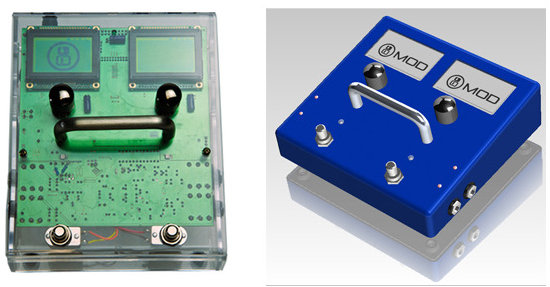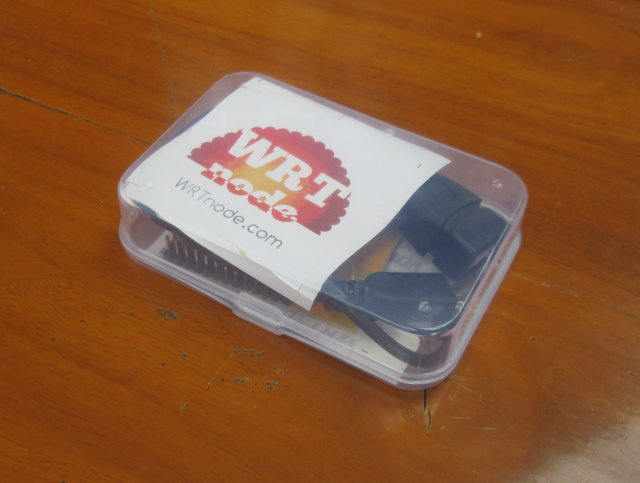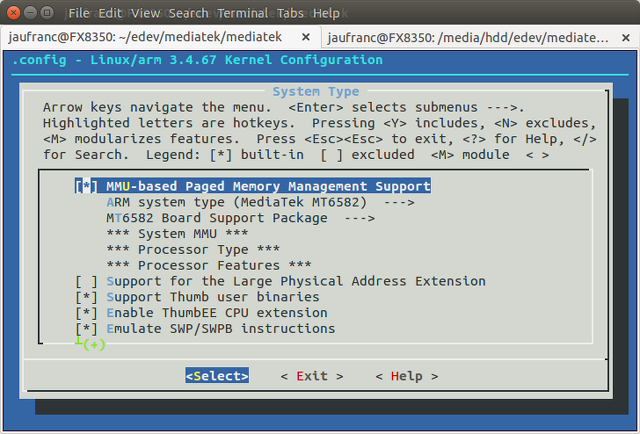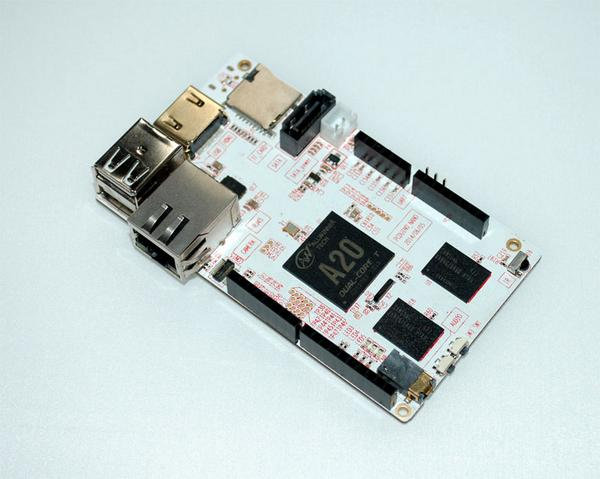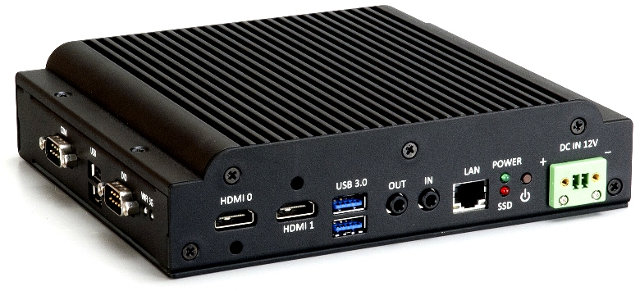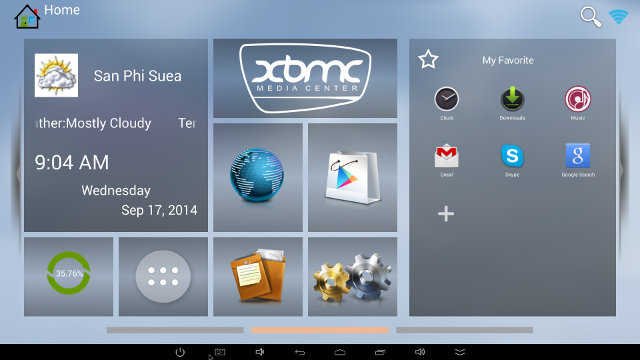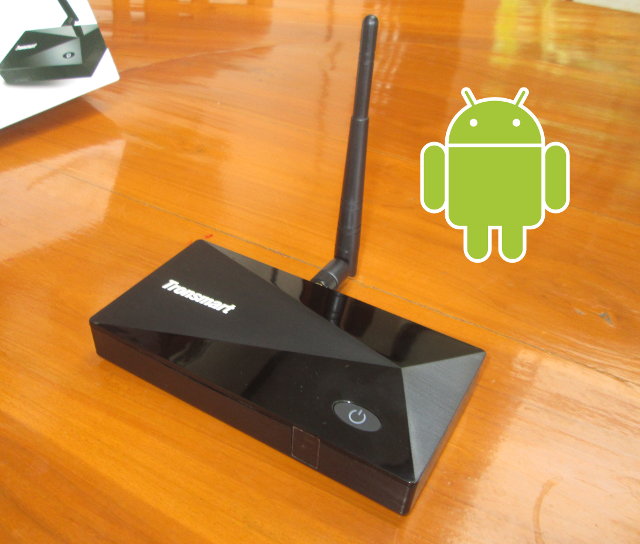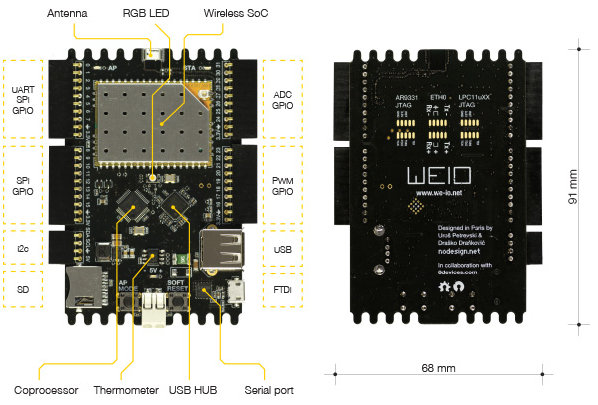If you are both a maker and a musician, MOD Duo multipurpose pedal may be a fun “toy” to play with. It’s an embedded computer comprised of a Hi-Fi soundcard (baseboard) powered by the same ITEAD Studio A20-CORE system on module found in ITEAD Studio IBOX, fitted into an enclosure with a pedalboard interface, and two graphics displays. You can create and share your own effects, or download the one made by the community using LV2 sound plugins, an open sound processing standard. A MOD Arduino Shield is also available to create new peripherals. Some technical specifications of the MOD Duo: SoC – AllWinner A20 dual core Cortex A7 processor @ 1GHz (AllWinner A23 is part of stretch goals) Two audio inputs Two audio outputs Stereo headphones output MIDI IN and MIDI OUT Cirrus Audio Codec USB – 1x USB Host for bluetooth, Wifi adapters and MIDI peripherals, 1x USB […]
Getting Started with WRTnode OpenWRT Development Board
Seeed Studio sent me two nice little boards that can be used for IoT development: WRTNode and LinkIt ONE. Today, I’ll show pictures of WRTNode and accessories, and go through the “starting guide“, and will test LinkIt ONE board a few days later. WRTnode Unboxing I’ve received WRTnode by Fedex, and the board is stored in a plastic box. Inside the box, you’ll find the board, a “special” USB used to power the board and as an OTG adapter, a piece of paper with useful links (Wiki), and some WRTnode stickers. Any micro USB to USB cable can be used to power the board, but this cable is useless to connect USB devices such as flash drives, webcams (OpenCV is supported), Bluetooth dongles, and so on. You could even connect a USB hub to connect multiple USB devices as shown below. I’ve also taken a picture of both sides of […]
Mediatek Releases Linux Source Code for Android One Smartphones
Android One is a program by Google aiming at bringing low cost smartphones to the emerging markets with firmware updates to the latest Android version guaranteed for two years. Three phones part of Android One program have recently been announced for the Indian market: Micromax Canvas A1, Karbonn Sparkle V, and Spice Dream Uno, and Android One phones will be available in Indonesia, the Philippines and South Asia (Bangladesh, Nepal, Pakistan, and Sri Lanka) by the year of the year. The three phones currently available sell for $100, which based on the specs (quad core processor, 1GB RAM, 4GB flash, 4.5″ display) is not exactly an aggressive pricing compared to what is already available from Aliexpress, but the main advantage here is clearly Google support with promised firmware updates, and currently Android 4.4.4. All these phones appear to be powered by Mediatek MT6582, and company decided to release the Linux […]
$39 PcDuino3 Nano ARM Linux Development Board Features HDMI, SATA, Gigabit Ethernet, Arduino Headers…
Linksprite recently announced PcDuino3 Nano development board powered by AllWinner A20 dual core processor. PcDuino3 Nano is, as you can expect, a smaller and cheaper version the company’s PcDuino3 board without Wi-Fi module, LVDS header, and I2S interface. The board does not appear to support Li-Po batteries either, but it adds one extra USB host port compared to its big brother. pcDuino3 Nano specifications: SoC – AllWinner A20 dual core ARM Cortex A7 @ 1.0 GHz with Mali 400MP2 GPU System Memory – 1GB DRAM Storage – 4GB NAND Flash, SATA connector, and microSD card slot (up to 32GB) Video Output – HDMI 1.4 with HDCP support Audio Out – 3.5mm analog audio interface Connectivity – Gigabit Ethernet USB – 2x USB host, 1x USB OTG Expansion Headers – Arduino UNO extension interface with 14xGPIO, 2xPWM, 6xADC, 1xUART, 1xSPI, 1xI2C. Camera – MIPI camera support Misc – IR receiver Power […]
VIA ARTiGO 1300 Quad Core x86 Rugged Digital Signage Player
VIA has recently announced ARTiGO 1300, a rugged digital signage player powered by a VIA quad core E-Series x86 processor with VX11PH media processor, provides two HDMI outputs for independent displays, USB 3.0 ports, Gigabit Ethernet and more. Beside digital signage applications, it can also be used for kiosks, menu boards, HMIs, and other IoT applications. ARTiGO A1300 Specifications: Processor – VIA QuadCore E-Series @ 1.0 GHz Chipset – VIA VX11PH Media System Processor with Chrome 645/640 GPU for 2D/3D, and hardware video decoding support (MPEG-2, WMV9, VC-1 and H.264) System Memory – 1x DDR3 1066/1333 SODIMM socket (up to 8GB) Storage – Support 1x 2.5” SATA SSD/HDD, 1x mSATA SSD. 32Mbit Flash memory for AMI Aptio UEFI BIOS. Video Output – 2x HDMI ports supporting resolutions up to 1920 x 1080 pixels. Dual independent HDMI display support. Audio – VIA VT2021 High Definition Audio Codec, Line-in and Line-out Connectivity […]
Creating and Flashing an Android Image from Rockchip RK3288 SDK
Following up on my post explaining how to build Android for RK3288 TV box, I’ve generated a firmware image, and flashed it to Tronsmart Orion R28 Meta TV box to see if it could boot properly. There’s basically no information in the Andoird SDK explaining how to do basic things like building from source, and generating and flashing the resulting image, so I’d like to thanks Linuxium, Droidmote and Naobsd for their various tips. Since I’ve built everything from source, I’m using a Linux machine, but you should be able to create and flash the Android image in Windows using tools in RKTools/windows folder. First let’s copy the required, and freshly built, files to create the firmware:
|
1 2 3 4 |
cp rockdev/Image-rk3288/* RKTools/linux/Linux_Upgrade_Tool_v1.2/rockdev/Image/ cp RKTools/rk3288-3.10-uboot-data1G.parameter.txt RKTools/linux/Linux_Upgrade_Tool_v1.2/rockdev/parameter cp RKTools/bootloader/uboot-emmc/RK3288Loader_uboot_Apr212014_134842.bin RKTools/linux/Linux_Upgrade_Tool_v1.2/rockdev/ cd RKTools/linux/Linux_Upgrade_Tool_v1.2/rockdev/ |
We’ll also need to edit package-file follows (I only had to change the bootloader field):
|
1 2 3 4 5 6 7 8 9 10 11 12 13 14 |
# NAME Relative path # #HWDEF HWDEF package-file package-file bootloader RK3288Loader_uboot_Apr212014_134842.bin parameter parameter misc Image/misc.img kernel Image/kernel.img boot Image/boot.img recovery Image/recovery.img system Image/system.img backup RESERVED #update-script update-script #recover-script recover-script |
And now create the firmware file:
|
1 2 3 4 5 6 7 8 9 10 11 12 13 14 15 16 17 18 19 20 21 22 23 24 25 |
./mkupdate start to make update.img... Android Firmware Package Tool v1.0 ------ PACKAGE ------ Add file: ./package-file Add file: ./RK3288Loader_uboot_Apr212014_134842.bin Add file: ./parameter Add file: ./Image/misc.img Add file: ./Image/kernel.img Add file: ./Image/boot.img Add file: ./Image/recovery.img Add file: ./Image/system.img Add CRC... Make firmware OK! ------ OK ------ ********RKImageMaker ver 1.61******** Generating new image, please wait... Writing head info... Writing boot file... Writing firmware... Generating MD5 data... MD5 data generated successfully! New image generated successfully! Making update.img OK. Press any key to quit: |
The firmware file update.img can be flashed with upgrade_tool […]
How to Build Android 4.4 for Rockchip RK3288 Devices (Tronsmart Orion R28)
After blowing up my ATX power supply, and learning such things as “FULL” power supplies do exists, I finally managed to build Android for Tronsmart Orion R28 using the provided SDK. I haven’t tried to load it on the device yet, but the build could complete successfully after following the steps below in Ubuntu 14.04. The SDK is probably not specific to one device, so it might just also work on other RK3288 TV boxes and tablets. First download Android 4.4 SDK for RK3288, or use the one in the micro SD card provided with the Beta version of R28 Pro and Meta. Install some dependencies:
|
1 2 3 4 5 |
sudo apt-get install git-core gnupg flex bison gperf libsdl1.2-dev libesd0-dev libwxgtk2.8-dev \ squashfs-tools build-essential zip curl libncurses5-dev zlib1g-dev pngcrush schedtool libxml2 \ libxml2-utils xsltproc lzop libc6-dev schedtool g++-multilib lib32z1-dev lib32ncurses5-dev \ lib32readline-gplv2-dev gcc-multilib libswitch-perl gcc-arm-linux-gnueabi lzop libncurses5-dev \ libssl1.0.0 libssl-dev |
Extract the SDK:
|
1 |
tar xvf Orion_R28_SDK_doc.tar.gz |
And build the kernel first: Enter the kernel directory:
|
1 |
cd RK3288_R-BOX_ANDROID4.4.2-SDK_V1.0.0/kernel/ |
Change arch/arm/boot/dts/Makefile to use RK3288 device tree file instead of an RK3188 (may not be needed, but the build failed for me without that change…):
|
1 |
dtb-$(CONFIG_ARCH_ROCKCHIP) += rk3288-box.dtb |
It’s also quite […]
WeIO is an Open Source Hardware IoT Board Programmable from a Web Browser (Crowdfunding)
WeIO is an open source hardware board for the Internet of things with Wi-Fi connectivity and lots of I/Os designed by nodesign, a French based startup, in collaboration of 8devices, the makers of the Carambola boards. WeIO is powered by an Atheros AR9331 SoC running OpenWRT as well as an NXP LPC MCU for faster handling of I/Os and support for analog I/Os. One interesting aspect of this board is that it can be programmed via a web browser using HTML5 or Python, and it does not rely on the Cloud to store data. WeIO hardware specifications: SoC – Atheros AR9331 MIPS 24K Wireless SoC @ 400 MHz MCU – NXP LPC11xx ARM Cortex M0 MCU for analog I/O and real-time H/W interfaces System Memory – 64 MB DDR2 Storage – 16 MB flash + micro SD slot Connectivity – 802.11 b/g/n Wi-Fi with on-board antenna (AP and STA modes), […]

